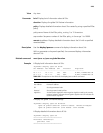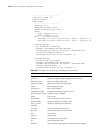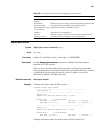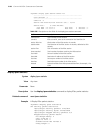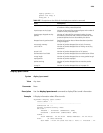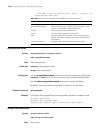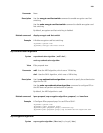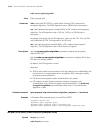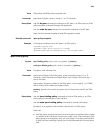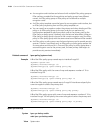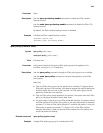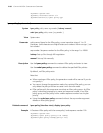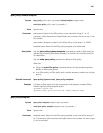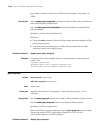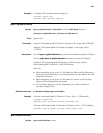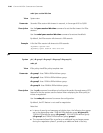
2133
View IPSec policy view/IPSec policy template view
Parameter peer-name: IKE peer name, a string of 1 to 15 characters.
Description Use the
ike-peer command to reference an IKE peer in an IPSec policy or IPSec
policy template configured through IKE negotiation.
Use the
undo ike peer command to remove the reference of an IKE peer.
Note that this command applies to only IKE negotiation mode.
Related command: ipsec policy-template.
Example # Configure a reference to an IKE peer in an IPSec policy.
<Sysname> system-view
[Sysname] ipsec policy policy1 10 isakmp
[Sysname-ipsec-policy-isakmp-policy1-10] ike-peer peer1
ipsec binding policy
Syntax ipsec binding policy policy-name [ seq-number ] [ primary ]
undo ipsec binding policy policy-name [ seq-number ] [ primary ]
View Encryption card interface view
Parameter policy-name: Name of the IPSec policy, a case insensitive string of 1 to 15
characters. Valid characters are English letters and numbers. No minus sign “-”
can be included.
seq-number: Sequence number of the IPSec policy, in the range of 1 to 10000,
with a smaller value indicating a higher priority.
primary: Specifies the current encryption card as the primary card of the IPSec
policy.
Description Use the
ipsec binding policy command to bind an IPSec policy or an IPSec
policy group to the encryption card interface.
Use the
undo ipsec binding policy command to remove the binding.
By default, an encryption card interface is bound with no IPSec policy.
Note that:
■ An IPSec policy group can be bound to an encryption card either before or after
it is applied to an interface as long as you create it first. After binding an IPSec
policy group to an encryption card, you must apply it to at least one interface
so that the flows matching the policy are to be processed with the encryption
card.



